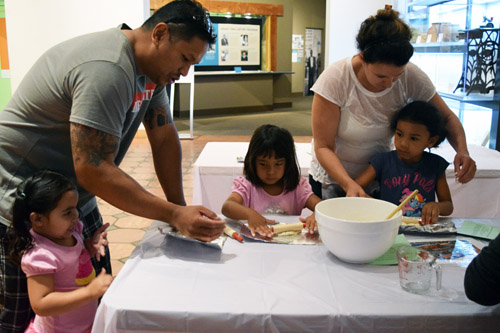
Story by Donald H. Harrison; Photos by Shor M. Masori
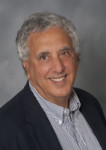
SAN DIEGO – Normally museums and their fund raisers like to see the “dough” rise, but this was not the case Sunday at the San Diego History Center.
Visitors to the Jewish exhibit at the San Diego History Center on Sunday learned the trick of making matzoh is not to let the dough rise. They also heard a humorous, fictional account of how matzoh got its name, and also became acquainted with the symbolic foods on the seder plate.
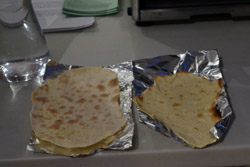
Samantha Alberts had the assignment of teaching how to make matzoh—a skill she only recently had learned by looking up the process on the Internet. She had visitors to her station – including youngsters Katyana, 5; Bethany, 3; and Shiloh Ahuva, of elementary school age—first mix three cups of flour with one cup of water. Then she had them knead the mixture, then roll it out with a pin. And finally she put the flattened dough into a toaster oven at 500 degrees for between two and three minutes.
In truth, she said, for matzoh to be kosher, the process is far more complicated. A special kosher flour must be used. The oven temperature is much higher. A rabbi or mashgiach needs to supervise the process. And the whole operation should not take more than 18 minutes, lest the dough rise.
But for demonstration purposes, regular flour was fine – except when little Bethany decided, to her dismay, that her dough was too sticky. Alberts quickly gave the child another batch of dough to roll out, restoring a smile to her face.
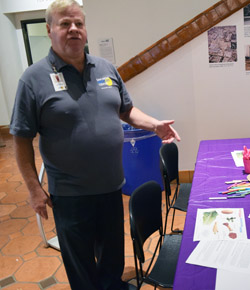
Nearby, at another station, Ray Rudolph, a member of Temple Beth Shalom in Chula Vista, was explaining the contents of a seder plate.
“We have charoses which is made out of apples, nuts, cinnamon and red wine, and it creates a mortar when it is all put together and that symbolizes the mortar that was used (by the Israelites) to put the bricks together (for their Egyptian overlords),” he said at one point while discussing the inventory of ingredients.
As for the bitter herb, he said at another point, “it symbolizes the strife and the suffering of the Israelites before they were free.”
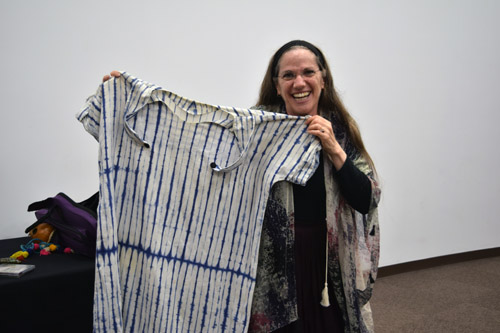
Karen Golden, a story teller from Los Angeles, holding forth in the History Center’s theater space, gave a humorous presentation for children about the Exodus.
Along the way out of Egypt, she told the children and their parents, the Israelites had to stop for various reasons, including calls of nature.
By late afternoon, they all were getting quite hungry. They wanted bread, but they could tell from the recipe that it would take too long, so they decided to take short cuts. Instead of putting yeast into the mixture of flour and water, they simply mixed flour and water without yeast, and pushed the dough into their camp fires.
It came out all brown.
“Mah zeh?” they asked, which is Hebrew for “what’s this?”
“Mah zeh? mah zeh?” echoed through the Israelites’ camp.
Moses didn’t know what it was. Crackers hadn’t been invented. “Let’s call it mah zeh,” Moses, the teacher of our people, suggested.
And so it became known as “mah zeh,” which over the years has had a change in pronunciation to “matzoh.”
While on the subject of food, Golden also told of the first and only time she made gefilte fish. No one told her she was supposed to fillet the fish before she threw it, bones and all, into the iron food grinder.
When she served it, she had to warn her seder guests why this gefilte fish was different from all other gefilte fish.
The History Center’s exhibit, featuring the Jewish history of San Diego, is open daily from 10 a.m. to 4 p.m., and is expected to run through the end of the year and possibly to next March. The matzoh making demonstration on Sunday was one of a number of special events that will be held periodically during the exhibition.
*
Harrison is editor of San Diego Jewish World. He may be contacted via donald.harrison@sdjewishworld.com